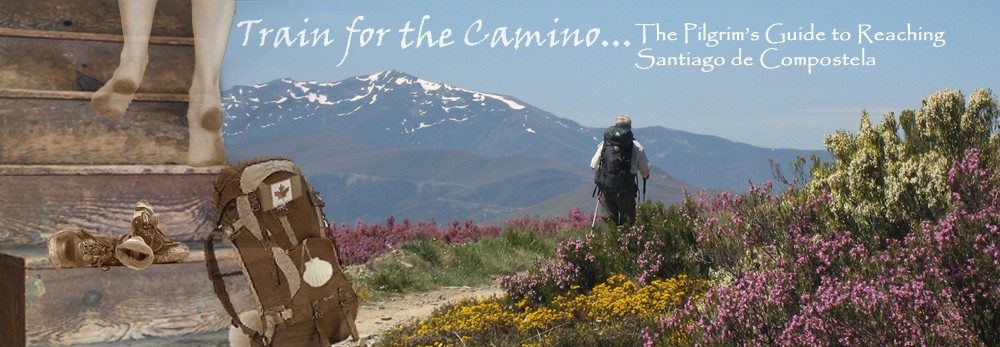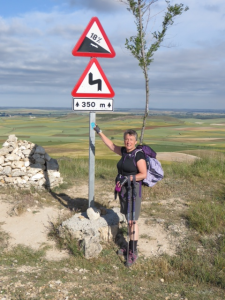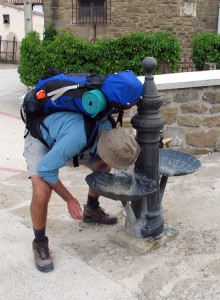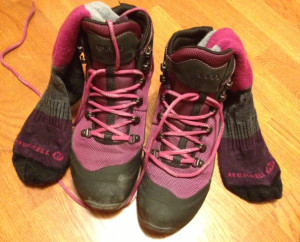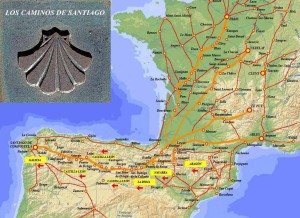I have been back home from my Camino trip for 8 weeks now. During that time I have struggled with how to incorporate my new Camino insights, fitness levels and attitudes into my old lifestyle. I have spent over a year of my life focused on training, preparing for and walking the Camino Frances. Now I am back home restless and confused on next steps. I still feel the energy and drive without another outlet or adventure to plan for. I have just experienced 45 days of freedom as a Camino Pilgrim walking each day without the usual work, family and life demands. For 45 days I followed yellow arrows and other Camino markers through medieval villages, country and forest pathways, mountain trails and historical Spanish cities. Each day was the simple adventure of walking from Point A to Point B to new locations and experiences… Freedom to enjoy each new day just focused on me and my walking partner(s) enjoying the magic of the Camino and the endearing support of fellow pilgrims and the local communities along the way. Continue reading
Category Archives: Leisure
Fitness Training for the Camino de Santiago Walking Adventure
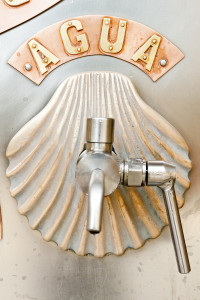
Buen Camino. Folks–this is it, the real adventure begins. Marta and I leave this Friday May 16 for our 800 km Camino de Santiago walking adventure. It has been 50 weeks since I started my fitness training in preparation for this challenge. The journey to train and prepare for walking the Camino has been exciting and physically hard but delivered many rewards: Continue reading
How to Get Happy, Strong and Healthy Feet for the Camino
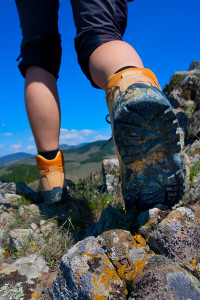 For the next few blogs I am going to discuss how to get happy, strong and healthy feet for the Camino (Felices, sanos y fuertes pies en el Camino). It’s very important to get your feet strong, stretched and ready to walk the long distances along the Way of St James to Santiago de Compostella.
For the next few blogs I am going to discuss how to get happy, strong and healthy feet for the Camino (Felices, sanos y fuertes pies en el Camino). It’s very important to get your feet strong, stretched and ready to walk the long distances along the Way of St James to Santiago de Compostella.
The function and anatomy of our feet is complex:
1) The feet are our connection with the Earth forming a weight bearing foundation for our body. The feet balance weight distribution and alignment with the body that lines up over them.
2) The feet and toes bear and propel body weight during movement. The feet balance the body during movement and changes in body position. The feet enable mobility, direction and balance. The toes help with balance and propulsion during movement.
Final To-Do List for the Camino – Only 14 Weeks Remain
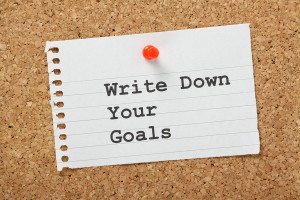 I have been a program / project manager most of my working career which means an obsessive focus on planning. This of course runs over into my personal life and I have a Microsoft Project plan, as well as several “To Do” and outfitting lists that I am tracking. Below is my final 14 week Master “To Do” list for my Camino trail planning with Completion dates. All this planning has helped reduce my level of Camino Readiness anxiety.
I have been a program / project manager most of my working career which means an obsessive focus on planning. This of course runs over into my personal life and I have a Microsoft Project plan, as well as several “To Do” and outfitting lists that I am tracking. Below is my final 14 week Master “To Do” list for my Camino trail planning with Completion dates. All this planning has helped reduce my level of Camino Readiness anxiety.
In my last blog post, as you know, I was experiencing anxiety in regards to endurance training for the long 800 km walk to Santiago de Compostella. I have been focusing on daily training activities and I am feeling good about my level of endurance training which includes hills, deep snow, and engaging the upper body using walking poles. Most of the items below are already in works, but they all need to be completed in the next 14 weeks.
Winter & Camino Endurance Training – Getting Perspective
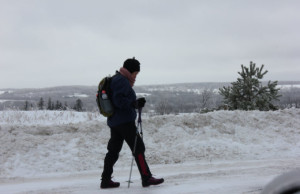 It has been a solid 2 months of walking in nasty winter conditions of varying cold arctic winds, heavy snow, ice storms, and slippery, dangerous surfaces. Last week I had an “I hate winter meltdown’ caused by feeling like an arctic vampire; living without sunlight and warmth and considered moving south. It was time to recalibrate, get perspective and put a positive spin on the winter blues. After all I am Canadian, and there are still 2 months until spring so I better “get a grip” and remember why I am training in these harsh conditions in the first place – to prepare me for the endurance required on the Camino!
It has been a solid 2 months of walking in nasty winter conditions of varying cold arctic winds, heavy snow, ice storms, and slippery, dangerous surfaces. Last week I had an “I hate winter meltdown’ caused by feeling like an arctic vampire; living without sunlight and warmth and considered moving south. It was time to recalibrate, get perspective and put a positive spin on the winter blues. After all I am Canadian, and there are still 2 months until spring so I better “get a grip” and remember why I am training in these harsh conditions in the first place – to prepare me for the endurance required on the Camino!
Train for the Camino – New Year’s Resolutions for 2014
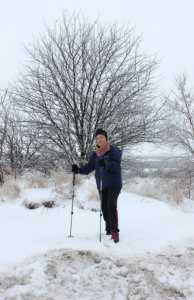 As I look ahead to 2014, I marvel that it will be the Year that I celebrate turning 60 and becoming a true pilgrim (a wanderer or traveler) for 40 days of walking and exploring the Camino Santiago de Compostela. Last year at this time I had no plans for walking the Camino. I was originally planning a 2 week trip to the North West Territories with friends to celebrate my 60th. In the early spring I had a change of heart. I cannot remember why the Camino Trail became my new travel choice but my friend and fellow walker Marta was as excited as I was and the decision was firmed up. I am proud of how far I have progressed in 2013 on my training and preparation for my Camino sojourn.
As I look ahead to 2014, I marvel that it will be the Year that I celebrate turning 60 and becoming a true pilgrim (a wanderer or traveler) for 40 days of walking and exploring the Camino Santiago de Compostela. Last year at this time I had no plans for walking the Camino. I was originally planning a 2 week trip to the North West Territories with friends to celebrate my 60th. In the early spring I had a change of heart. I cannot remember why the Camino Trail became my new travel choice but my friend and fellow walker Marta was as excited as I was and the decision was firmed up. I am proud of how far I have progressed in 2013 on my training and preparation for my Camino sojourn.
Marion’s Buen Camino Warm up and Cool Down Yoga Practice
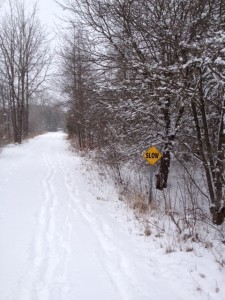 In this blog post I was planning to write about my shopping search for Trekking poles. However the last 2 weekends have been a snow fest and I have not been out shopping. This is unfortunate since the more it snows, the more I need those walking poles. During my last walk I found a tree branch and used that as a walking pole to help me trudge through the snow on the Trans Canada Trail. Instead I will write about my other major exercise commitment for my Camino Santiago de Compostella training in the form of Yoga warm up and cool down poses for long distance walking.
In this blog post I was planning to write about my shopping search for Trekking poles. However the last 2 weekends have been a snow fest and I have not been out shopping. This is unfortunate since the more it snows, the more I need those walking poles. During my last walk I found a tree branch and used that as a walking pole to help me trudge through the snow on the Trans Canada Trail. Instead I will write about my other major exercise commitment for my Camino Santiago de Compostella training in the form of Yoga warm up and cool down poses for long distance walking.
In June when I started my walking training, I also started my Yoga Instructor Training. My main reason for taking the 200 hour instructor training was to be able to “deep dive” into the Yoga poses for both stretching and strengthening my muscles, breathing (pranayama) techniques to help build my lung capacity and meditation to help with the mental toughness and confidence to complete the 800 kilometer walk. My goal was to be able to design a yoga practice to support my training efforts for the walk, and to keep me stretched and limber during the actual 40 days of walking on the Camino trail.
5 Benefits of using Trekking / Walking Poles on the Camino Santiago de Compostela
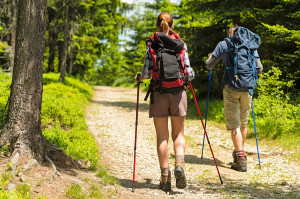 Now that I am training with my backpack and hiking boots on longer distances and varied terrain trails, it is time to add trekking poles to my training gear. I was debating when to start training with the trekking poles, but the first winter snow, and the additional weight of my backpack convinced me to start shopping for new poles. When I sat down and evaluated the benefits of using walking poles it was a “no-brainer” decision. The 5 benefits of Trekking poles are:
Now that I am training with my backpack and hiking boots on longer distances and varied terrain trails, it is time to add trekking poles to my training gear. I was debating when to start training with the trekking poles, but the first winter snow, and the additional weight of my backpack convinced me to start shopping for new poles. When I sat down and evaluated the benefits of using walking poles it was a “no-brainer” decision. The 5 benefits of Trekking poles are:
Safe to Drink from Water Fountains along the Camino Trail?
In this blog post, I am answering the final question asked by Vicki from a previous blog post regarding the safety of the water from the drinking fountains on the Camino trail.
Wherever you travel, always research the quality and sources of local water and food. The risk of travelers’ diarrhea varies depending on the geographic region, and it is contaminated food rather than water that is the most common cause. Traveling in Southern Europe (which Spain is a part of), the risk of contracting travelers’ diarrhea varies from 15 to 20%. (click here to access the Government of Canada site info).
I always ask myself these 4 questions before I travel:
4 Recommendations on Budgeting for the Camino de Santiago
 In a previous blog post, I received 5 great questions about training for and walking the Camino de Santiago. One of the questions was how much cash to take on the journey. Below are my 4 recommendations on how to budget for the trail.
In a previous blog post, I received 5 great questions about training for and walking the Camino de Santiago. One of the questions was how much cash to take on the journey. Below are my 4 recommendations on how to budget for the trail.
1. If you are walking the Camino Frances, there are many ATM’s along the way. I have seen recommendations for carrying at least 3 days of expenses in cash. Below is a table which shows how much cash I will carry with me, as well as the total cost of the trip. This would include travel, lodging, food, emergency stash, and miscellaneous purchases and costs. You will always be able to find an ATM within 3 days of walking (more frequently in many areas). If your bank belongs to the Global ATM Alliance, you can get your fees waived. You may not be able to find a Barclays or other partner bank ATM along your route so be prepared to pay ATM fees –averaging 2 Euros each time. In regards to your bank card (ATM Card), it is a good practice to advise your bank how long and where you will be traveling.
Answering Questions About Training for and Walking the Camino
In a previous blog post, I received some great questions about training for and walking the Camino de Santiago. Here are answers to 2 of those questions.
Question: Would you ever during a walk, not make it to a village before dark?
Answer: I would never recommend not making it a village before dark, unless that is part of your plan to camp out and you have the requisite gear. Here is a link to a global sunrise, sunset time website. You can choose your location, and print a summary for the year. For the months of June and July In Santiago de Compostela the sun rises around 7 am and sets around 10 pm. Our plan is to start early each morning. This means being on the road by 7 am walking an average of 20 km’s per day.
4 Tips on Maintaining Foot Health on the Camino de Santiago
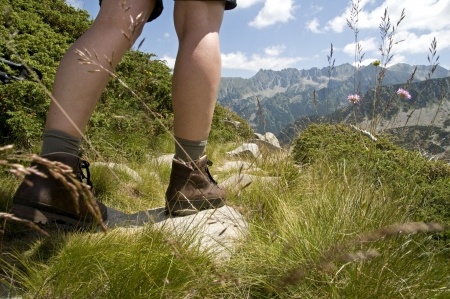 I recently had a comment submitted asking questions about blisters and shoes for walking the Camino de Santiago. And so Vicky, in answering your questions, I decided to include my guidelines for evaluating, planning for and maintaining foot health in the following 4 tips:
I recently had a comment submitted asking questions about blisters and shoes for walking the Camino de Santiago. And so Vicky, in answering your questions, I decided to include my guidelines for evaluating, planning for and maintaining foot health in the following 4 tips:
1) Try on and evaluate many boots and buy the best, well-fitted lightweight, waterproof hiking boot/shoe with good ankle support for your foot type. Combine with self-wicking, fast-drying hiking socks. Evaluate socks before you buy your shoes and bring your first choice of socks when you are getting fitted for your boots. When you are buying your boots, ensure your sales help has experience with long distance hiking, and walking in many different terrains. Ask if they have a ramp for testing the uphill, downhill fit / feel of the boot.
10 Steps to Managing Your Camino Training Plan
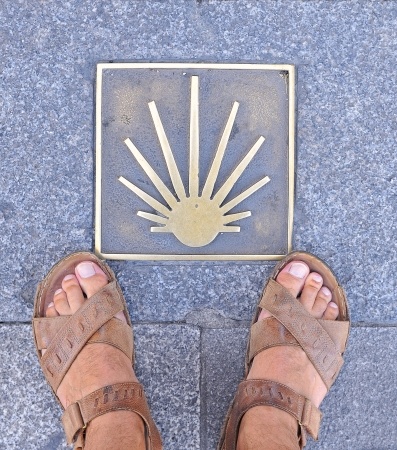 Like Winston Churchill, I don’t like worrying in advance about events or activities. I start with understanding the goals, challenges and expected outcomes and then plan for success. That is the reason I developed a formal training plan for achieving my Camino goal of walking an 800 kilometer route to Santiago de Compostela in 40 days. Here are the 10 Steps I followed in creating and maintaining my training plan:
Like Winston Churchill, I don’t like worrying in advance about events or activities. I start with understanding the goals, challenges and expected outcomes and then plan for success. That is the reason I developed a formal training plan for achieving my Camino goal of walking an 800 kilometer route to Santiago de Compostela in 40 days. Here are the 10 Steps I followed in creating and maintaining my training plan:
1. I documented my goals, and constraints. The goal was to comfortably walk the 800 kilometers to Santiago de Compostela in 40 days. The key is to start the route with a good level of fitness so I can enjoy the journey. I had to determine a realistic amount of time I could spend each week on exercise considering my time constraints:
- Demanding full time job with travel.
- Family and social commitments.
10 Question Survey – Assessing Physical Fitness Readiness for Walking the Camino
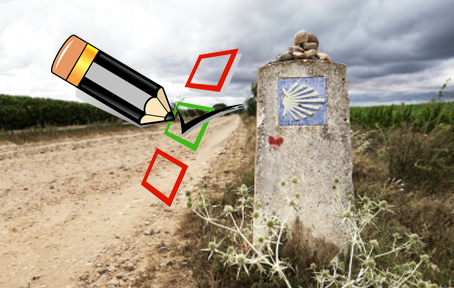
As we prepare to walk the Camino de Santiago, for most of us that means starting an exercise program. It is tough to choose and plan the exact program that will motivate us and gets the results we need to accomplish our fitness goals. We first need to understand what our fitness goals are and what is the fitness mindset and mental toughness required to commit to our goals. Our bodies may be ready to start exercising but our minds are what we need to work on when it comes with keeping to an exercise routine. So I thought it might be helpful to provide this quick 10 question survey to help you assess your physical fitness readiness for walking the Camino.
Welcome to Train for the Camino de Santiago
Everyone has their own reasons for walking the Camino de Santiago, also known as The Way of St. James. It is a popular pilgrimage route to the Cathedral of Santiago de Compostelo in Galicia Spain where the sacred remains of the Apostle St James (the Greater) are purported to be buried. The earliest visits to the shrine for St James are recorded in the 9th century and non-stop over the ages the pilgrims kept coming and their origins expanded to include many countries around the world. Today over 100,000 pilgrims annually walk the Way of St James, varying in their distances walked and their reasons for walking. Continue reading
